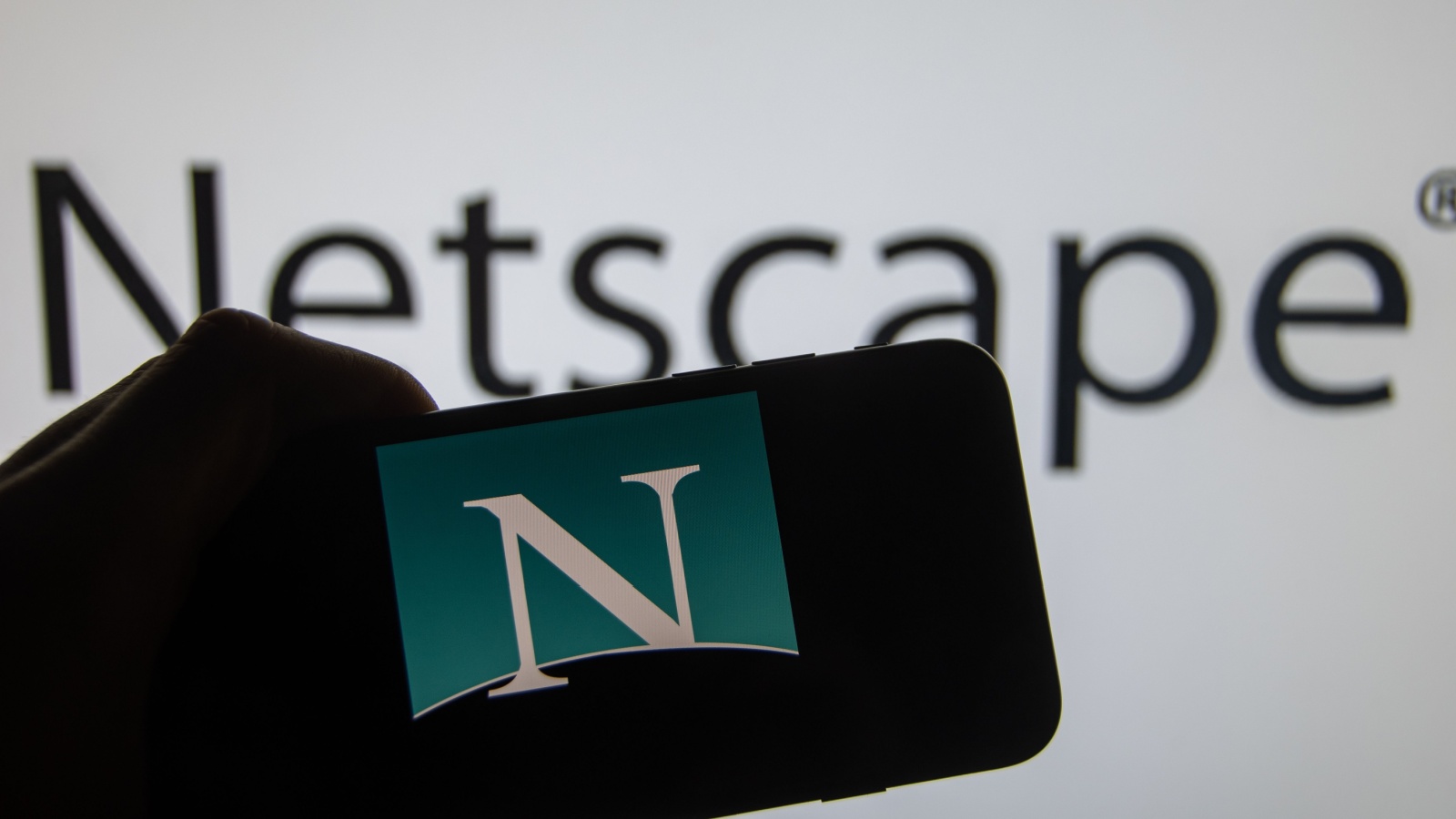Canada’s tech industry has produced some of the most innovative companies in the world, from global smartphone pioneers to groundbreaking software developers. Yet, many of these success stories ended suddenly—undone by market shifts, acquisitions, or the relentless pace of technological change. These once-promising firms helped define Canada’s digital identity before fading from the spotlight. Here are 19 Canadian tech companies that disappeared almost overnight.
BlackBerry (Post-Hardware Era Collapse)

Once the global leader in smartphones, BlackBerry was Canada’s pride in the tech world. Its secure messaging and physical keyboard became iconic during the early 2000s. However, the company failed to adapt when Apple and Android smartphones transformed the market. Despite attempts to pivot toward software and cybersecurity, BlackBerry’s hardware division collapsed, marking the end of its dominance. The company still exists in a much smaller capacity, focusing on enterprise security, but its fall from the top remains one of the most notable declines in Canadian tech history.
Nortel Networks

Nortel was once Canada’s largest technology firm and a global telecommunications giant. In the 1990s, its innovations helped build much of the world’s early internet infrastructure. However, mismanagement, accounting scandals, and the bursting of the tech bubble in the early 2000s led to financial ruin. The company declared bankruptcy in 2009, and its assets were sold off to competitors such as Ericsson and Ciena. Nortel’s sudden fall had a lasting impact on Canada’s tech ecosystem, putting thousands out of work and serving as a cautionary tale about corporate overreach and financial oversight.
Corel Corporation

Corel gained international fame in the 1990s with its popular software suite, CorelDRAW, which rivaled Microsoft Office and Adobe products. The Ottawa-based company was once a major player in creative and productivity software, even acquiring WordPerfect. However, fierce competition and poor strategic decisions caused its market share to erode. While Corel still exists today under a new name, Alludo, its brand recognition and influence have largely vanished. Its decline reflects how quickly Canadian tech companies that once showed global promise can fade from the spotlight when innovation slows or diversification falters.
iCraveTV

Launched in 1999, iCraveTV was one of Canada’s earliest streaming platforms, offering live television broadcasts over the internet long before services like Netflix became household names. However, its success was short-lived due to legal battles with broadcasters and rights holders who claimed copyright infringement. The platform was forced to shut down after just a few months of operation. Although iCraveTV disappeared almost overnight, it was ahead of its time, foreshadowing the modern streaming era. Its brief existence remains a fascinating chapter in Canadian tech history, highlighting both innovation and the challenges of early digital media.
RIM (Research in Motion)

Before it became known as BlackBerry, Research in Motion was a small Canadian startup developing wireless communication technology. Founded in Waterloo, Ontario, RIM revolutionized business communication with its secure mobile email devices. The company reached global success in the 2000s, with millions of users worldwide. However, internal conflicts, slow innovation, and overconfidence during the smartphone revolution led to its downfall. The rebranding to BlackBerry was an effort to revive its fortunes, but by then the market had shifted. RIM’s collapse marked the end of one of Canada’s most successful and short-lived tech empires.
Sidefx Interactive (Early Projects Before Houdini)

Before becoming the powerhouse behind the Houdini animation software, Sidefx Interactive went through a turbulent early phase of experimental game and graphics projects. Based in Toronto, the company focused on computer graphics tools in the late 1980s and early 1990s but struggled to find commercial footing. Many of its early ventures quietly disappeared as the company pivoted toward the professional visual effects industry. That change ultimately saved it, but its early products are now forgotten. The disappearance of its first projects shows how adaptation was essential for survival in Canada’s emerging digital arts sector.
ATI Technologies

ATI Technologies was one of Canada’s most innovative companies in the computer hardware industry. Founded in Markham, Ontario, in 1985, it became a global leader in graphics processing units (GPUs) used in PCs and gaming consoles. ATI’s Radeon graphics cards were well-respected for their power and reliability. However, in 2006, the company was acquired by AMD for US$5.4 billion. The ATI brand was eventually phased out, marking the end of one of Canada’s proudest tech names. While its technology continues under AMD’s banner, the ATI name itself vanished almost overnight from the market.
360networks

Founded during the dot-com boom, 360networks aimed to revolutionize telecommunications infrastructure by building a vast fiber-optic network across North America. The Vancouver-based company raised billions in funding and was briefly valued at over US$10 billion. However, when the tech bubble burst in 2001, demand for bandwidth plummeted, and 360networks filed for bankruptcy protection almost overnight. Its ambitious expansion and over-leveraged finances became a textbook example of early 2000s tech excess. Though parts of its network were later acquired by other firms, 360networks itself quickly disappeared from Canada’s technology landscape.
Wi-LAN

Wi-LAN began in Calgary as a pioneer in wireless internet technology during the 1990s, aiming to become a global leader in broadband communications. Despite early innovation, the company struggled to commercialize its products and later shifted toward patent licensing and litigation. This pivot briefly boosted its financial performance but damaged its reputation as a true tech innovator. By the late 2010s, Wi-LAN’s influence had sharply declined, and its name faded from mainstream recognition. Once viewed as a symbol of Canadian wireless innovation, Wi-LAN ultimately vanished from prominence due to changing market dynamics and strategic missteps.
JetForm

JetForm was a leading Ottawa-based software company in the 1990s, best known for its electronic forms and workflow automation tools. Its products were widely adopted by governments and large corporations worldwide, positioning JetForm as one of Canada’s top tech firms. However, as web-based applications and newer document platforms emerged, JetForm’s relevance waned. Adobe acquired the company in 2002, rebranding its products into Adobe LiveCycle, effectively ending JetForm’s independent existence. The company’s disappearance illustrates how quickly Canadian software innovators of the 1990s were absorbed by global tech giants seeking specialized solutions.
Cognos

Cognos, another Ottawa success story, became one of the world’s leading business intelligence and analytics companies. Founded in 1969, it developed powerful software that helped organizations make data-driven decisions. By the 2000s, Cognos was one of Canada’s largest tech employers and a global brand. In 2008, IBM acquired Cognos for US$5 billion, integrating its products into IBM’s analytics division. While the technology lives on, the Cognos name was phased out, and its distinct identity disappeared. The company’s rise and quiet absorption into IBM mark a common fate among Canada’s most successful tech pioneers.
Cybermation

Cybermation, based in Markham, Ontario, specialized in enterprise job scheduling and automation software. Founded in the late 1980s, it gained a strong international client base and was recognized for its reliability and innovation in IT operations management. In 2006, it was acquired by CA Technologies (Computer Associates), ending its independent operations. Although its technology continues under CA’s suite of products, the Cybermation brand itself was discontinued. Its disappearance was quiet but symbolic of how many mid-sized Canadian tech firms were acquired during the consolidation wave of the 2000s, removing another name from Canada’s tech legacy.
CAE Electronics (Pre-Merger Division)

Before merging into the larger CAE Inc., CAE Electronics was a distinct Montreal-based division specializing in advanced flight simulators and training systems. The company built a strong global reputation for aviation technology and defense simulation. In the late 1990s, internal restructuring merged CAE Electronics into CAE’s broader aerospace and training divisions, effectively ending its independent identity. While CAE remains a leading global simulation firm, the original CAE Electronics division disappeared as part of corporate consolidation. Its disappearance marks the quiet end of one of Canada’s most technically advanced and specialized electronics developers.
Mitel Networks (Original Version Before Acquisition)

Mitel Networks was founded in Ottawa in 1973 and became one of Canada’s telecommunications success stories, producing business phone systems and unified communications technology. After decades of innovation and global growth, Mitel struggled with shifting technology trends and competition from cloud-based services. The company was acquired by Searchlight Capital Partners in 2018 and later restructured, effectively dissolving its original form. While Mitel’s name continues, the company that once symbolized Canadian telecom ingenuity has transformed beyond recognition. Its original identity, built on pioneering hardware and enterprise communications, has largely disappeared from Canada’s independent tech scene.
OpenText (Downsizing Era)

OpenText, headquartered in Waterloo, Ontario, was once one of Canada’s most dominant enterprise software firms. Known for its document and content management systems, it became a symbol of Canadian tech success in the 1990s and 2000s. However, as competition intensified and cloud-based solutions gained traction, OpenText faced major restructuring and downsizing. Many of its Canadian operations and staff were reduced as it shifted focus overseas. Though OpenText technically survives today, its downsizing era marked the end of its dominance as a proudly Canadian-led innovator. The company’s fading domestic presence reflected broader shifts in Canada’s tech identity.
Kobo (Absorbed by Rakuten)

Kobo began in Toronto as a bold competitor to Amazon’s Kindle, offering affordable e-readers and an expansive digital bookstore. Launched by Indigo Books & Music in 2009, Kobo quickly gained international traction and became a point of national pride for Canadian tech. However, in 2012, Japan’s Rakuten acquired the company for US$315 million, transforming Kobo into a subsidiary. While the brand still exists globally, its Canadian headquarters and leadership influence have diminished. Kobo’s absorption represents how promising Canadian startups are often swallowed by global corporations before fully realizing their independent potential.
Tucows

Tucows, originally based in Toronto, started in the 1990s as a popular software download site, offering free and shareware programs before becoming a key player in internet services and domain registration. It was one of Canada’s earliest internet success stories, symbolizing the digital shift of the early web. Over time, competition from larger domain registrars and changing online distribution models eroded Tucows’ influence. Though the company pivoted to mobile and telecom ventures, its iconic role as a software and internet pioneer faded. Tucows quietly withdrew from mainstream recognition, leaving behind a nostalgic mark on early internet culture.
Netscape Canada Division

During the internet boom of the 1990s, Netscape’s Canadian division helped develop and localize one of the world’s first major web browsers. The division was a small but significant part of Canada’s early tech evolution, contributing to the growth of the country’s digital infrastructure. However, after Netscape was acquired by AOL in 1999, most of its Canadian operations were shuttered. The fall of Netscape globally also ended the relevance of its Canadian branch. The disappearance of Netscape Canada signaled the end of a pioneering era in which Canada briefly played a role in shaping the modern web.
Zip.ca

Zip.ca, founded in Ottawa in 2004, was Canada’s answer to Netflix’s original DVD-by-mail model. It offered a wide range of movies to subscribers nationwide, briefly gaining popularity in the pre-streaming era. Despite its strong start, the rapid rise of digital streaming rendered Zip.ca’s business obsolete almost overnight. By 2014, the company ceased operations, unable to compete with online platforms that made physical rentals irrelevant. Its downfall reflects how quickly Canadian tech ventures tied to physical media succumbed to global digital disruption. Zip.ca remains a reminder of Canada’s short-lived but ambitious homegrown entertainment services.
21 Products Canadians Should Stockpile Before Tariffs Hit

If trade tensions escalate between Canada and the U.S., everyday essentials can suddenly disappear or skyrocket in price. Products like pantry basics and tech must-haves that depend on are deeply tied to cross-border supply chains and are likely to face various kinds of disruptions
21 Products Canadians Should Stockpile Before Tariffs Hit
